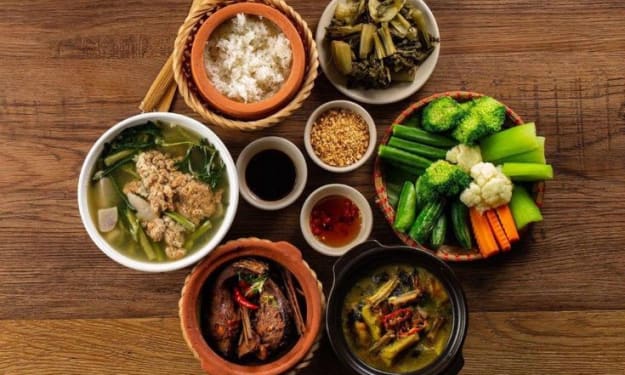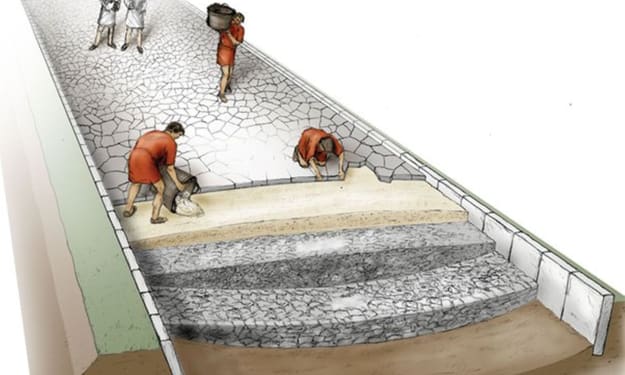Brief history of Vietnam
Vietnam is a country founded in legends. Millennia of invasions and conflicts have shaped Vietnamese culture into what you see today. To help you fully appreciate the attractions and culture you’ll encounter in Vietnam, here’s a brief overview of the notable time periods and figures in the nation’s history, as well as specific suggestions for deeper exploration during your trip.

- Prehistoric Age > Paleolithic Age > Neolithic Age > Bronze Age > Iron Age
- The formation of Van Lang Kingdom and Au Lac Kingdom
+ The Hung Kings took turns ruling the Van Lang country
+ In the 3rd century BC, King An Duong established the Au Lac country and traces of Co Loa Citadel still exist today.
- Northern domination period: From 207 BC to the 10th century AD:
In the year 207 BC, Au Lac was invaded by Trieu Da, King of Nam Viet (present-day Guangzhou, China). Then in 111 BC, Au Lac was colonized by the Han Dynasty. Au Lac is divided into two districts: Giao Chi and Cuu Chan. Vietnam continued to be colonized by China for 11 centuries. During this period, many national heroes raised uprisings to fight for independence such as:
➞ Hai Ba Trung Uprising by two sisters of Trung Trac Trung Nhi in 40 - 43
➞ Ba Trieu Uprising by Ms. Trieu Thi Trinh in 1940 248
➞ The uprising of Ly Nam De, also known as Ly Bon or Ly Bi, in 542 - 602, named the country Van Xuan, the capital at Long Bien (present-day Long Bien, Hanoi)
➞ Uprising of Mai Thuc Loan, also known as Mai Hac De 722
➞ Phung Hung Uprising in 766 - 791
And Ngo Quyen with a resounding victory over the Southern Han army on the Bach Dang River in 938, ended 1000 years of domination and regained sovereignty for Vietnam.
Ngo - Ngo Quyen > Dinh - Dinh Tien Hoang > Early Le - Le Hoan > Ly - Ly Cong Uan > Tran - Tran Canh > Ho Dynasty - Ho Qui Ly > Later Tran - Tran Trung Quang > Early Le - Le Loi > Mac Dynasty - Mac Dang Dung > Le Trung Hung - Le Chieu Thong > Tay Son Dynasty - Nguyen Hue > Nguyen Dynasty from Nguyen Anh to Bao Dai 1945. Trinh Nguyen fought from the middle of the early Le dynasty, which lasted nearly 200 years until the end of Le Trung Hung . The Nguyen Dynasty existed until 1945 with Bao Dai as the last king.
History of Vietnamese feudal dynasties:
A new page of Vietnamese history opened in the early 10th century when the Ngo, Dinh, and Early Le dynasties were solid, united, and strong enough to protect the country's independence and autonomy.
Ngo Dynasty: (939 - 965) 26 years with 5 Kings named Van Xuan country longitude at Co Loa
1. Former Ngo Vuong - Ngo Quyen (939-944):
2. Duong Binh Vuong - Duong Tam Kha (Younger brother) wife usurped the throne) (944-950)
3. Nam Tan Vuong - Ngo Xuong Can (Ngo Quyen's second son) (950-965)
4. Thien Sach Vuong - Ngo Xuong Ngap (Ngo Quyen's nephew) 951-959)
In During the period 951 - 959, our country had 2 Kings
5. Ngo Su Quan - Ngo Xuong Xi (965)
Since Duong Tam Kha robbed the Ngo dynasty in 944, the places refused to be tamed, and the leaders emerged one after another. regions and sent troops to attack each other. The 12 Warlords' Rebellion lasted more than 20 years (944-968) and ended when Dinh Bo Linh unified the country, establishing the state of Dai Co Viet - the first centralized feudal state in history.
Dinh Dynasty: (968 - 980) 12 years with 2 kings whose national name was Dai Co Viet with capital at Hoa Lu
1. Dinh Tien Hoang - Dinh Bo Linh (968-979)
2. Dinh Phe De - Dinh Toan ( 979-980)
Dinh Toan was only 6 years old when his courtiers took him to the throne. Taking that opportunity, the Song Dynasty sent troops to invade our country. For the benefit of the nation, Queen Mother Duong Van Nga (wife of Dinh Tien Hoang, biological mother of Dinh Toan), following the wishes of the generals and soldiers, gave the "Long Côn" shirt (symbol of the throne) to Thap General Le Hoan, that is, Le Dai Hanh.
Pre-Le: (980 - 1009) 29 years with 3 generations of Kings The country's name was Dai Co Viet with the capital at Hoa Lu
1. Le Dai Hanh - Le Hoan (980-1005)
2. Le Trung Tong - Le Long Viet (1005)
3. Le Ngo Trieu - Le Long Dinh (1005 - 1009)
Le Long Dinh worked rashly to kill the usurping King, liked to be lewd, brutal, and ripped sugar cane off the monk's head... Because he was too debauched Le Ngo Trieu was king for 4 years (1005 - 1009) then died, at the age of 24. Long Dinh died, his son named Sa was still young, under the direction of the mandarin Chi Hau Dao Cam Moc, the court crowned Ly Cong Uan as Emperor
Ly Dynasty: (1009 - 1225) 9 kings in 216 years
1. Ly Thai To - Ly Cong Uan (1010 - 1028) in 1010 moved the capital to Thang Long
2. Ly Thai Tong - Ly Phat Ma (1028 - 1054) in 1054 changed the national name to Dai Viet with the capital at Thang Long
3. Ly Thanh Tong - Ly Nhat Ton (1054 - 1072)
4. Ly Nhan Tong - Ly Can Duc (1072 - 1128) - The first National Tutor Giam was established in 1076 in Thang Long Citadel
5. Ly Than Tong - Ly Duong Hoan (1128 - 1138)
6. Ly Anh Tong - Ly Thien To (1138 - 1175)
7. Ly Cao Tong - Ly Long Trat (1176 - 1210)
8. Ly Hue Tong - Ly Sam (1211 - 1224)
9. Ly Chieu Hoang - Ly Phat Kim (1224 - 1225)
Under the direction of Tran Thu Do, Ly Hue Tong was forced to become a monk, giving up the throne to his daughter, Princess Chieu Thanh (at that time only 7 years old), whose reign name was Ly Chieu Hoang. Also under the direction of Tran Thu Do, Tran Canh (8 years old), son of Mr. Tran Thua, was brought in to serve Ly Chieu Hoang and Tran Thu Do spread the news that Ly Chieu Hoang had married Tran Canh.
On October 21, At Dau year (1225), Ly Chieu Hoang held a grand festival at Thien An Palace. In front of the civil and military mandarins, Chieu Hoang took off his royal robe and invited Tran Canh to ascend the throne, changing his reign to Kien Trung in the first year. From there, the Tran dynasty was founded.
Tran Dynasty: (1226 - 1400) 175 years with 12 kings
1. Tran Thai Tong (Tran Canh, 1225 - 1258)
First Mongol War in 1258
2. Tran Thanh Tong (Tran Hoang, 1258 - 1278)
3 . Tran Nhan Tong (Tran Kham, 1279-1293)
The 2nd Mongol War in 1285
The 3rd Yuan Mongol War: 1287 - 1288
In 1289, Tran Quoc Tuan was crowned "Hung Dao Great King". The full title of the conferred title is "Hung Dao Dai Vuong Tran Quoc Tuan". Folk and later generations call it "Tran Hung Dao" for short
4. Tran Anh Tong (1293 - 1314)
5. Tran Minh Tong (1314 - 1329)
6. Tran Hien Tong (1329 - 1341)
7. Tran Du Tong (1341 ) - 1369)
8. Tran Nghe Tong (1370 - 1372)
9. Tran Due Tong (1372-1377)
10. Tran Phe De (1377-1388)
11. Tran Thuan Tong (1388-1398)
12. Emperor Tran Thieu (1398 ) -1400)
The captain's name was Tran An, when he was thirteen years old he became Emperor Thieu. Ho Quy Ly proclaimed himself Kham Duc Hung Liet Dai Vuong. On February 28, Canh Thin year - 1400, Ho Quy Ly forced Emperor Thieu to abdicate the throne and deposed him as Bao Ninh Dai Vuong. The Tran dynasty from Tran Thai Tong to Tran Thieu De had 12 generations of kings, reigning for 175 years.
Ho Dynasty (1400 - 1407) 7 years with 2 generations, the King changed the country's name to Dai Ngu, capital city in Tay Do (Thanh Hoa) (Ngu means Yen Vui)
1. Ho Quy Ly (1400-1401)
2. Ho Han Thuong (1401-1407)
In 1406, the Ming Dynasty used Ho Quy Ly as an excuse to rob the Tran dynasty and bring 800,000 troops to invade our country. The Ho Dynasty's army and people fought back fiercely but failed. On June 17, 1407, the Ming army captured Ho Quy Ly father and son, ending the short 7 years of the Ho Dynasty.
Hau Tran Dynasty: (1407 - 1414) 7 years with 2 generations of Kings
1. Emperor Gian Dinh - Tran Ngoi (1407-1409)
2. Tran Trung Quang - Tran Quy Khoang (1409-1414)
April of the year Giap Ngo - 1414, Because the army was small and could not fight against the Ming army, they captured Tran Quy Khoang, Dang Dung, and Nguyen Suy and brought them back to China. On the way, King and I of the Later Tran dynasty jumped into the sea and committed suicide to show their mettle. Tran ended
the Northern domination period
. After conquering Dai Viet, the Ming army divided our country into districts to rule. They forced our people to be servants, taxes were heavy, and life was extremely miserable. On Mau Than Day, January of the Year of the Dog (February 7, 1418), Le Loi raised the flag of insurrection in Lam Son village, Luong Giang district, Thanh Hoa town. There was military strategist Nguyen Trai offering the book Binh Ngo to win people's hearts, the grandson of General Tran Nguyen Dan, Tran Nguyen Han, and many talented people and heroes from everywhere participated. On January 3, 1428, the insurgents were completely victorious, Le Loi was crowned Emperor, establishing the Le dynasty. History calls it Later Le to distinguish it from Early Le 980-1009 founded by Le Hoan.
Early Le - Later Le (1428-1527) 10 kings in 100 years changed the country's name toDai Viet's capital was at Dong Kinh (today's Imperial Citadel of Thang Long)
Le Thai To - Le Loi (1428-1433)
Le Thai Tong - Le Nguyen Long (1433-1442)
Le Nhan Tong - Le Bang Co (1442-1459)
Le Thanh Tong - Le Tu Thanh (1460-1497)
Le Hien Tong - Le Sanh (1498-1504)
Le Tuc Tong - Le Thuan (June 6, 1504 - December 7, 1504)
Le Uy Muc - Le Tuan (1505 -1509)
Le Tuong Duc - Le Oanh (1509-1516)
Le Chieu Tong - Le Y (1516-1522)
Le Cung Hoang - Le Xuan (1522-1527)
On June 15, Dinh Hoi year - 1527, Mac Dang Dung brought Troops from Co Trai entered Thang Long capital to force the king to cede the throne, forcing the King and Queen Mother to commit suicide. Thus, Le Cung Hoang reigned for 5 years and was 21 years old.
Le - Mac War
Mac Dynasty (1527 - 1593)
In the early period, the capital of the Mac Dynasty was at Thang Long Citadel, then moved north to set up the capital at Cao Binh - Cao Bang City today
Mac Thai To - Mac Dang Dung - 1527-1529
Mac Muc Tong - 1562-1592
Mac Canh Tong - 1592-1593
Mac Dai Tong - 1593-1625
Mac Minh Tong - 1638-1677
Mac Duc Tong - 1681-1683 (last) Remnants of the Mac family still exist By 1593,
the Trinh Nguyen conflict lasted more than 150 years.
The Trinh - Nguyen conflict was a period of territorial division between the regime of "King Le and Lord Trinh" in the North of the Gianh River (Dang Ngoai) and Lord Nguyen ruling in the South. (Dang Trong) and ended when the Tay Son dynasty overthrew both the Nguyen lords and the Trinh lords.
Initially, both the Trinh and Nguyen forces carried the slogan "Fu Le destroy Mac" to win people's hearts and swear loyalty to the Later Le Dynasty. After the Mac Dynasty was overthrown, in name, both Lord Trinh and Lord Nguyen were two servants of the Later Le Dynasty, both Dang Trong and Dang Ngoai were the territories of the Le Dynasty. But in reality, both of these feudal groups created their own powerful forces like two separate countries. The king of the Later Le dynasty no longer had real power, so he could not prevent the conflict between the Trinh and Nguyen families.
The Nguyen Dynasty expanded its territory by destroying Champa and encroaching on Chenla to expand its territory. Both sides had good rulers, so the territory was stable for more than 150 years.
Le Trung Hung - Later Le with 16 successive Le kings for 256 years capital at Dong Kinh (today's Hoang Thanh Thang Long)
Trang Tong 1533-1548
Trung Tong 1548-1556
Anh Tong 1556-1573
The Tong 1573-1599
Kinh Tong 1600-1619
Than Tong 1619-1643 and 1649-1662
Chan Tong 1643-1649 Huyen
Tong 1663-1671
Gia Tong 1672-1675
Hy Tong 1676-1704
Du Tong 1705-1728
Hon Duc Cong 1729-1732
Thuan Tong 1 733-1735
U Tong 1735-1740
Hien Tong 1740-1786. Born to Princess Le Ngoc Han, later became the wife of Nguyen Hue
Chieu Thong from 1787 to 1789,
Trinh Bong established himself as Marshal of Yen Do Vuong and overwhelmed the king, causing chaos in the court and killing each other. Nguyen Hue, then King of Bac Binh, pulled his army to the North to quell the rebellion and then withdrew his army to Phu Xuan.
To restore the Le Dynasty, in July 1788, the Queen Mother of the Le Dynasty went to ask for help from the Manchu Qing Dynasty. Relying on the Manchu Qing army, Le Chieu Thong returned to the capital Thang Long and brutally took revenge on the Tay Son followers.
On the 5th day of the Lunar New Year of the Year of the Rooster (1789), the Tay Son army directly commanded by Emperor Quang Trung marched to the North and defeated 290,000 Manchu invaders at Dong Da mound to gain independence for our country. Le Chieu Thong, the king who sold his country, followed the remnants of the Qing army to China.
Tay Son Dynasty (1789 - 1802) - Nguyen Nhac, Nguyen Lu and Nguyen Hue capitals in Qui Nhon and Phu Xuan (Hue)
When King Quang Trung was preparing to send troops to the South to attack Gia Dinh, he suddenly died ( 1792). His son Nguyen Quang Toan was still young when he succeeded the throne without a capable leader, so the Tay Son family quickly weakened. Internal disputes occurred. In mid-1802, Nguyen Anh (Remnant of Dang Trong) moved out and captured Thang Long. Nguyen Anh took revenge on Tay Son followers extremely brutally: The graves of King Thai Duc and King Quang Trung were dug up, their remains were pounded into powder, mixed with gunpowder and shot. Female general Bui Thi Xuan and her daughter were beaten by elephants, Tran Quang Dieu was beheaded.
The Nguyen Dynasty (1802-1945) changed the country's name to Vietnam in Hue.
Nguyen Anh ascended the throne in 1802 and established the Nguyen Dynasty with 13 kings in 143 years
1. Nguyen Phuc Anh (1802-1820) Founder of the Nguyen Dynasty
2 . Nguyen Phuc Dam - Minh Mang (1820 - 1841) the national name was changed to Dai Nam
3. Nguyen Phuc Mien Tong - Thieu Tri (1841 - 1847) 4. Nguyen Phuc Hong Nham - Tu Duc (1847-1883) 5. Nguyen Phuc Hong Nham - Tu Duc
(1847-1883)
Phuc Ung Chan - Duc Duc (1883)
6. Nguyen Phuc Hong Dat - Hiep Hoa (1883)
7. Nguyen Phuc Ung Dang - Kien Phuc (1883-1884)
8. Nguyen Phuc Ung Lich - Ham Nghi (1884-1885)
9 . Nguyen Phuc Ung Ky - Dong Khanh (1885-1889)
10. Nguyen Phuc Buu Lan - Thanh Thai (1889-1907)
11. Nguyen Phuc Vinh San - Duy Tan (1907 - 1916)
12. Nguyen Phuc Buu Dao - Khai Dinh (1916 - 1925)
13. Nguyen Phuc Vinh Thuy - Bao Dai (1925 - 1945)
History of Vietnam during the French colonial period
1858 French troops occupied Da Nang, marking French domination of Indochina. Can Vuong Movement led by King Ham Nghi
1860 - 1887 Mai Xuan Thuong's uprising in Binh Dinh
1884-1889 Nguyen Thien Thuat's uprising in Bai Say
1885-1895 Phan Dinh Phung's uprising in Nghe Tinh
1886 -1887 Dinh Cong Trang's uprising in Thanh Hoa
1887-1913 Hoang Hoa Tham's uprising in Yen The
1904-1908 Phan Boi Chau's Dong Du movement and Phan Chau Trinh's Dong Kinh movement.
December 1927 Nguyen Thai Hoc's uprising in Yen Bai
February 3, 1930 Establishment of the Indochina Communist Party (today's Communist Party of Vietnam)
May 1930 - April 1931 Soviet Nghe Movement Tinh
September 1940 Japanese troops arrived in Indochina
September 1940 Bac Son uprising
November 23, 1940 Cochinchina uprising
May 19, 1941 Establishment of Viet Minh front
May 9, 1945 Japan ousted France from Dong Duong
August 19, 1945 Decision on the general uprising of the Viet Minh front in Tan Trao
September 2, 1945 President Ho Chi Minh declared independence to give birth to the Democratic Republic of Vietnam, capital city Hanoi
After the August Revolution, the Vietnamese people continued to endure invasion by foreign troops.
December 19, 1946 The anti-French movement was restored
October 1947 Fall-Winter Campaign in Viet Bac
Fall-Winter 1950 French troops failed at the Vietnam-China border October
1952 French troops failed in Northwest campaign
March 13, 1954 - May 7, 1954 French army defeated at Dien Bien Phu
July 21, 1954 The Geneva Agreement was signed clearly stating: recognizing the national rights of Vietnamese and Lao people and Cambodia, do not interfere in the internal affairs of these countries, implement a ceasefire on both sides, concentrate troops at the 17th parallel (temporary boundary between South and North Vietnam), and hold general elections in year 1956.
History of Vietnam in the resistance war against America
After the French colonialists withdrew from the North, Vietnam was temporarily divided into two regions at the 17th parallel. The North (Democratic Republic of Vietnam) began to rebuild.
1956 The US supported Ngo Dinh Diem's government. In 1956, there was no national general election to elect a new government to unify the country like the Geneva Accords in 1954.
1956-1960 Dong Khoi Movement
1961-1965 The US failed in its "special war" strategy in the region. South Vietnam.
1965-1968 The US failed in its "local war" strategy in South Vietnam.
August 5, 1964-October 1, 1968 The United States failed in the first escalating war in the North
January 30, 1968-September 23, 1968 The general offensive of the year Mau Than by the people and revolutionary forces Southern network.
June 6, 1969 Established a provisional revolutionary government.
1968-1972 America failed in trying to "Vietnamize" the war
April 6, 1972 - October 1972 America failed in the second war of sabotage in the North.
December 18-29, 1972
The US attacked Hanoi, Hai Phong and some other provinces in Northern Vietnam with B-52 bombs and F111 fighter planes.
On January 23, 1973, the Paris Agreement was signed. On
January 27, 1973, the Paris Agreement officially recognized Vietnam as an independent country, with sovereignty, territorial integrity and required US troops to withdraw from Vietnam. Nam
January 6, 1975 Liberation of Route 14 and Phuoc Long province, marking the attack and overthrow of the Saigon puppet government.
March 4-12, 1975 Failure of the Saigon government in the Central Highlands campaign
March 1975 Consecutive failures of the Saigon government in Hue and Da Nang.
April 16, 1975 The defense line in Phan Rang was defeated
April 26, 1975 Entering the Ho Chi Minh campaign
April 30, 1975 Liberation of Saigon
May 2, 1975 Liberation of the delta provinces Mekong River and the entire South.
Border war 1975 - 1979
Southwest Border War 1975-1979
Vietnam-China border war from February 17, 1979 to March 16, 1979. In fact, the war lasted until 1991. There was a very fierce battle and great losses in Vi Xuyen, Ha Giang on July 12, 1984.
On July 2, 1976, the country's name was changed to the Socialist Republic of Vietnam. The Vietnam Socialist Association took Hanoi as its capital and renamed Saigon Ho Chi Minh City.
After liberation, the whole country overcame the consequences of more than 30 years of war and began to build the country. Vietnam entered the stage of economic development
About the Creator
Lily Lê
I am a Vietnamese.I love to share Vietnamese culture,cuisine,and music with everyone
Enjoyed the story? Support the Creator.
Subscribe for free to receive all their stories in your feed. You could also pledge your support or give them a one-off tip, letting them know you appreciate their work.






Comments
There are no comments for this story
Be the first to respond and start the conversation.